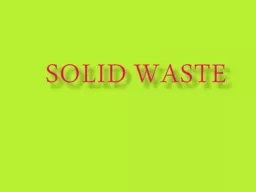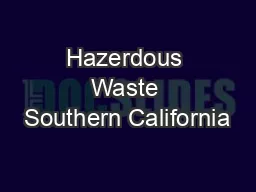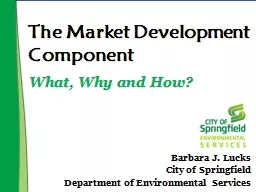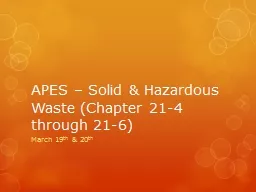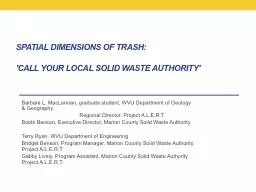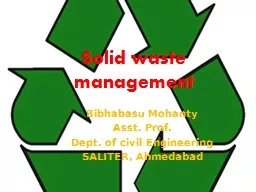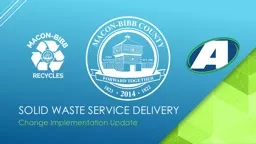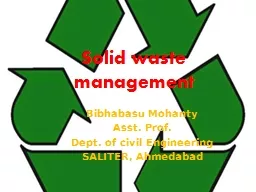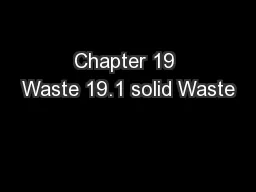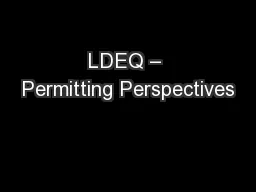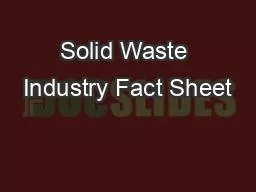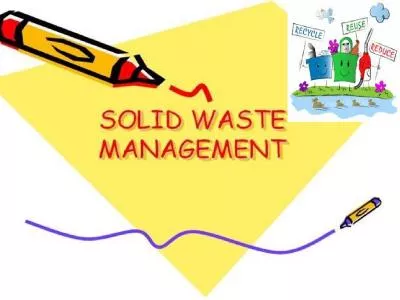PPT-SOLID WASTE
Author : briana-ranney | Published Date : 2016-08-10
INTRODUCTION During the course of history human activities for survival like consumption and production often linked to solid waste Solid wastes are the material
Presentation Embed Code
Download Presentation
Download Presentation The PPT/PDF document "SOLID WASTE" is the property of its rightful owner. Permission is granted to download and print the materials on this website for personal, non-commercial use only, and to display it on your personal computer provided you do not modify the materials and that you retain all copyright notices contained in the materials. By downloading content from our website, you accept the terms of this agreement.
SOLID WASTE: Transcript
Download Rules Of Document
"SOLID WASTE"The content belongs to its owner. You may download and print it for personal use, without modification, and keep all copyright notices. By downloading, you agree to these terms.
Related Documents

